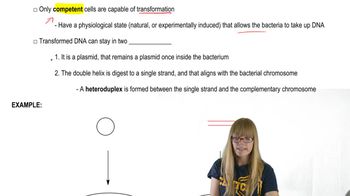Here are the essential concepts you must grasp in order to answer the question correctly.
tRNA Structure
Transfer RNA (tRNA) is a type of RNA molecule that plays a crucial role in translating the genetic code from mRNA into proteins. It has a characteristic cloverleaf structure, which allows it to carry specific amino acids to the ribosome during protein synthesis. Understanding the structure of tRNA is essential for grasping how it interacts with mRNA and ribosomes to facilitate translation.
Recommended video:
Holley's Cloverleaf Model
The two-dimensional cloverleaf model of tRNA was proposed by Francis Crick and later refined by Robert Holley based on experimental data. This model illustrates how tRNA molecules fold into a specific shape that is essential for their function in protein synthesis. Holley's work involved analyzing the sequences and structures of tRNA, leading to insights into how these molecules recognize codons on mRNA.
Recommended video:
Experimental Evidence
The proposal of the cloverleaf model was supported by various experimental techniques, including enzymatic digestion and chemical modification studies. These experiments provided evidence for the secondary structure of tRNA, revealing how specific regions of the molecule interact with amino acids and mRNA. Understanding the methods used to derive this information is crucial for appreciating the scientific process behind the model's development.
Recommended video:
 Verified step by step guidance
Verified step by step guidance Verified video answer for a similar problem:
Verified video answer for a similar problem:
